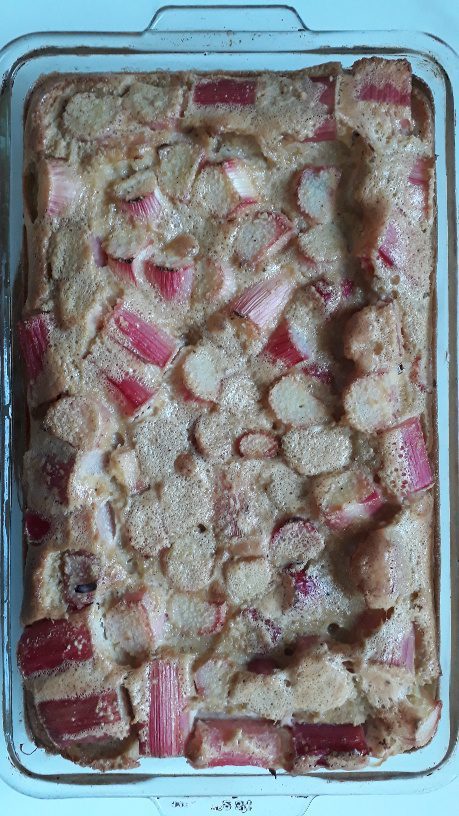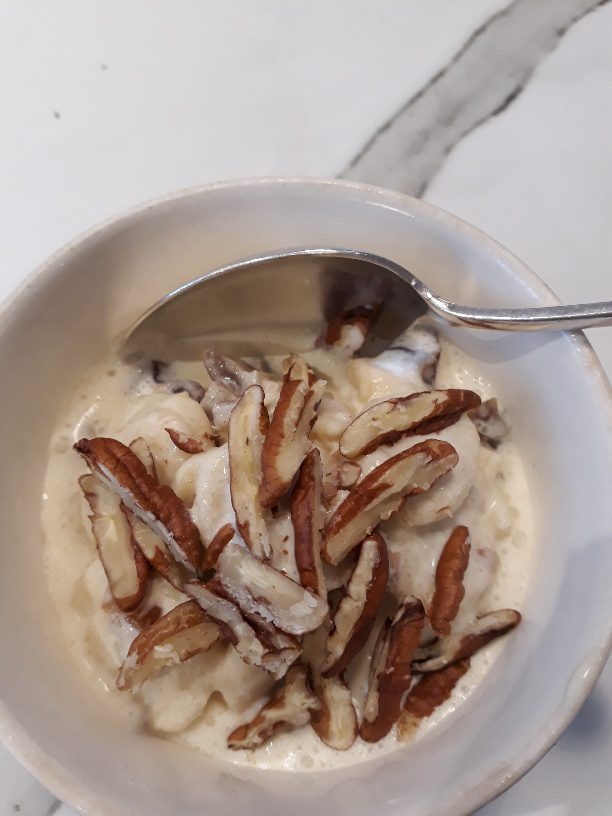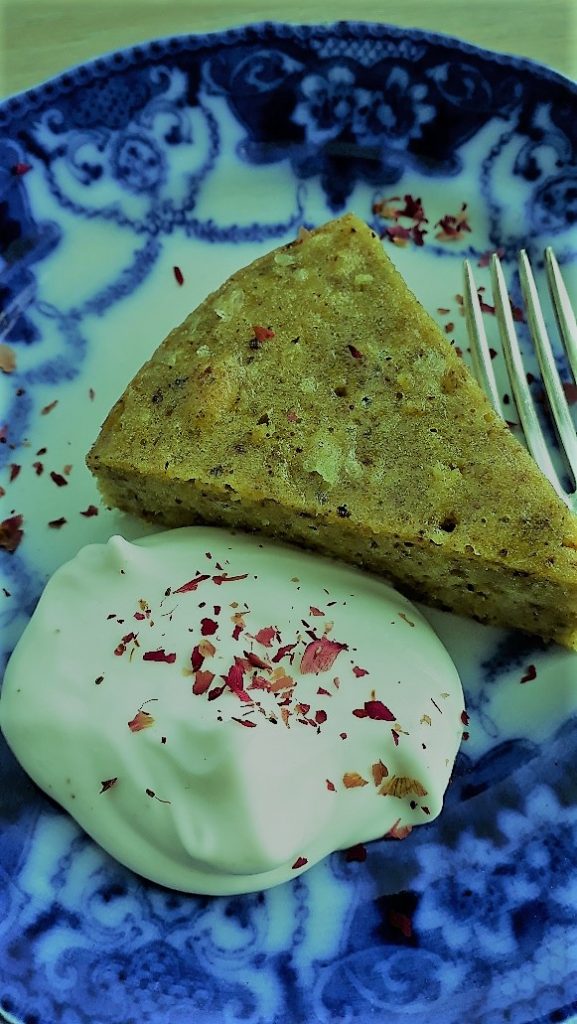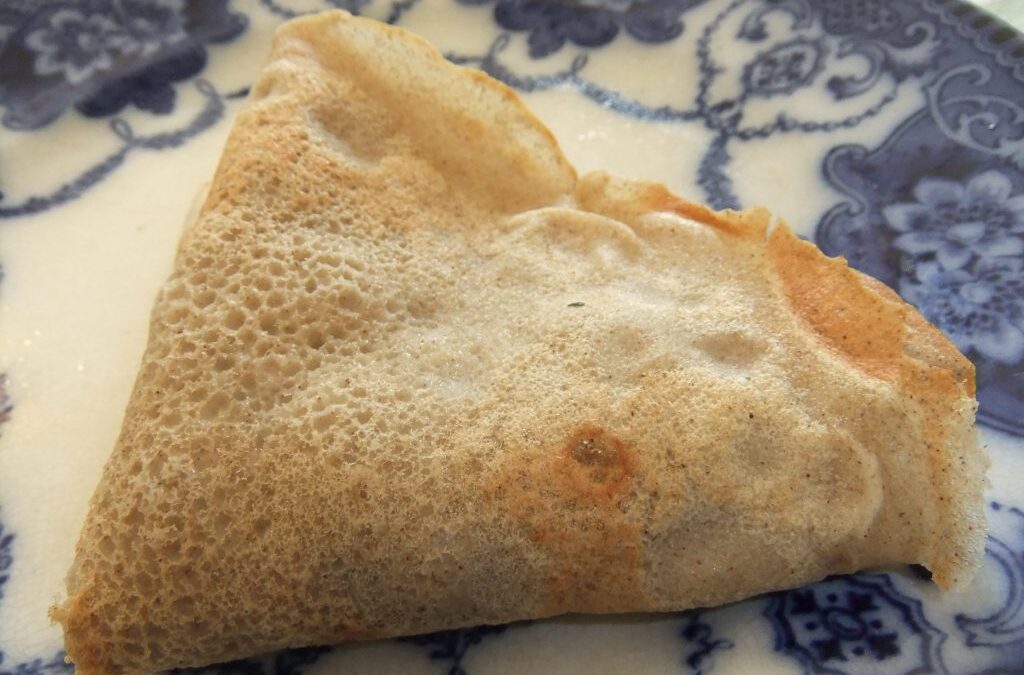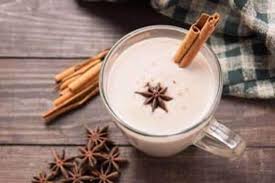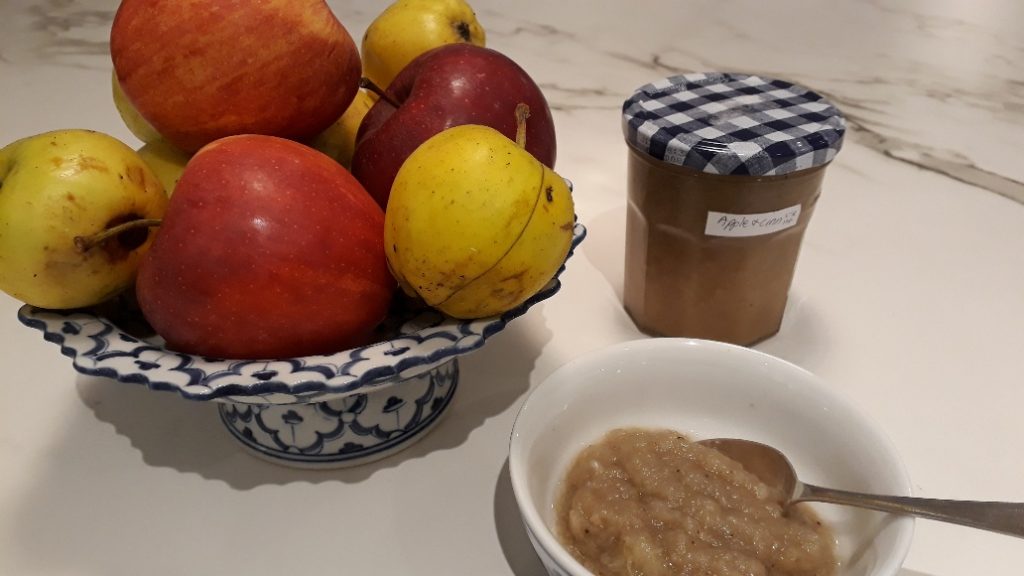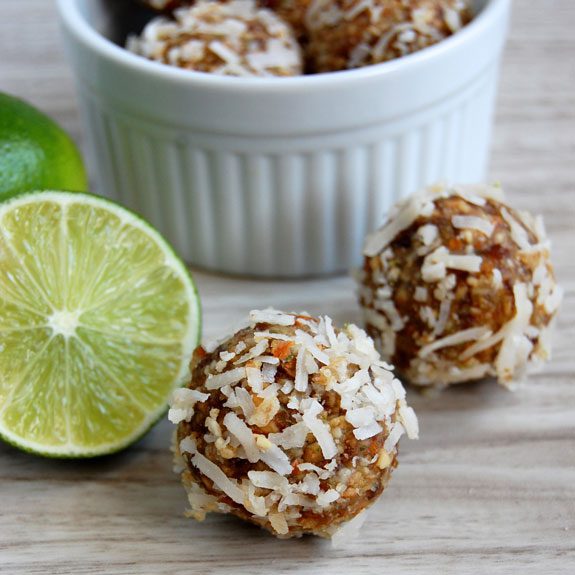
Apr 13, 2020 | Anna's Best Recipes, Cakes, biscuits & bars, Desserts & drinks
I love these and just baked a load after a lovely walk in our woods close-by. Once my supplies of unusual ingredients like healthier-than-sugar xylitol and erythritol run out I will be going online to shop in www.evergreen.ie , www.nourish.ie or nipping into my local shop Get Fresh in Ballyroan for supplies. This recipe is from Darina Allen. The only change I made was dropping sugar and substituting xylitol.
I like to eat these with some fresh raspberry/strawberry coulis sweetened with xylitol/erythritol/stevia and a big dollop of whipped cream. To make a coulis pour some frozen/fresh berries into a pan, cook until thawed and soft, mash a bit and add your (healthier) sweetener. It is a really good idea to avoid chemical sweeteners like sucralose, saccharin & aspartame because ironically these sabotage good gut bugs and contribute to weight gain!! These scones are not a health-booster but are less health-sabotaging than sugar-laden scones.
Tomorrow back to normality after my binge on high carbohydrate foods like breads, cakes and potatoes since lockdown. But for today, these yummy scones.
To make 6-7 decent size scones
138g white or blend of white and brown rice flour (I like Dove’s Farm mix of white and brown)
25g tapioca flour
2 tsp gluten-free baking powder
1 rounded tsp xanthan gum
1/2 teaspoon salt (sea salt/Himalayan salt)
2 rounded tablespoons erythritol/xylitol
55g butter, chilled
55g sultanas (optional)
1 egg, organic if possible
125-175ml natural yoghurt or (better for dairy-sensitive folk) natural, home-made kefir
Egg wash (optional, if you like a shiny top on your scones) – this is just a beaten egg
1. Preheat oven to 250C (235C fan)
2. Sift all the dry ingredients into a large bowl and mix well.
3. Rub in the butter, then add sultanas and gently mix together.
4. Lightly whisk the yoghurt/kefir and egg together.
5. Make a well in the centre of the dry ingredients, add the egg yoghurt/kefir and mix to a soft dough. Add a little more yoghurt/kefir if needed.
6. Turn onto a rice-floured board and knead lightly, just enough to shape into a round (knead too much and the result will be tough)
7. Roll to around 2.5cm thick, stamp into scones with a 5.5cm round cutter. Place on a rice-floured baking sheet and if using, brush with the egg wash.
8. Bake for approximately 10 minutes until golden brown on top. Leave to cool for a while on a wire rack.
9. Serve split in half with butter, or my fruit coulis (above), some no-added sugar jam like Follain or St Dalfour and whipped/clotted cream.
Why these are better for you:
OK, so a snack made from grains, cream and sweet stuff is never going to be a net health-promoter but by avoiding added sugar you are really helping reduce inflammation and helping your immune system fight off bad bugs. Did you know that gluten, in “normal” baking, opens up the normally tight barrier in your small intestine. These “tight junctions” are there to prevent toxins, bacterial by-products and undigested food spilling from your gut into your bloodstream. Gluten produces this reaction in normal, healthy volunteers and has been videoed live by researchers using capsule video cameras. Who knew!! This loss of barrier function lasts for 3-5 hours after gluten hits your small intestine. Remember, this is not only in people with gluten sensitivity. Why this is relevant to your health is that a damaged gut barrier opens the door to ALL chronic health conditions and stresses your immune system, leaving you more open to infection. A damaged gut barrier also increases sepsis in hospital patients.
Switching to a home-made fruit coulis (with healthy sweeteners) or a no-added sugar jam like St Dalfour/Follain brands means less of an assault on your immune system. Stay well.

Apr 4, 2020 | Anna's Best Recipes, Desserts & drinks
I have adapted this from the recipe by littlejarofspices. Had it last week and it was GORGEOUS. The original recipe uses an additional 2 tbs of coconut sugar which after the first 10 minutes of baking you sprinkle over the top of the clafoutis to give a caramelised top. I didn’t bother. A dollop of coconut-based yoghurt or whipped cream is lovely on the side. I personally used half gluten free flour (my own blend of sorghum, millet and oat flours) and half finely ground almonds but either works well.
Makes 8 servings
4 stalks (200g) of rhubarb
4 medium eggs
100g almond flour (finely ground almonds give a nice smooth texture, or use your own blend of gluten-free flour flour or glutinacious)
45g coconut sugar (for a lovely caramel flavour)
70g xylitol or erythritol (e.g. Dr Coy’s Stevia Erylite)
250 ml unsweetened almond milk, coconut milk or milk
1 tsp vanilla extract (vanilla “essence” contains gluten)
Coconut oil (or if you eat dairy, butter) for greasing
Pinch of pink salt or sea salt
1.Preheat oven to 190°C and grease a ceramic pie dish/pyrex dish with butter or coconut oil.
2.Wash the rhubarb stalks, chop off and discard the ends and cut them into 2.5 cm pieces and place them in the dish.
4. In a bowl, combine almond flour/gluten-free flour, coconut sugar, xylitol/erythritol and salt. Whisk in the eggs, milk and vanilla extract. The batter should be very thin & liquid.
5. Pour the batter over the rhubarb pieces in the pie dish and place in the oven on the middle rack. Bake for 25 minutes. If it still looks very very liquid in the centre, you might need to give it another 10 minutes until just set.
6. Let cool around 20 minutes before serving.
Why this is better for you:
This avoids a lot of the problems of conventional sugar which suppresses immunity and raises inflammation. Coconut sugar has a lower glycaemic index than sugar and still contains some nutrients. But do remember that coconut sugar is still a high carbohydrate (high natural sugar) ingredient. So this dessert isn’t a staple but more of a weekend or special treat.

Apr 3, 2020 | Anna's Best Recipes, Desserts & drinks
Are weaning off eating foods with a ton of added sugar in? This one will satisfy even the sweetest tooth. This is decadent, unctuous and toffee-like. It is by Nigel Slater from Real Fast Food. Though totally free from refined sugar its still a very high carbohydrate dessert. So its best eaten after a protein meal.
As you can see from the photo I used sliced raw pecans instead of the almonds (I had accidentally munched my way through my flaked almond supplies). If you don’t have the nuts, it doesn’t matter. If you wanted to, you could also decorate with peeled slices of fresh orange.
For 2
95g stoneless dried dates/110g dates with stones in
1 tsp (teasp) orange flower water (if you don’t have any, use a dessertspoon of fresh orange juice instead)
150ml single cream
2 large bananas, ideally ripe (a little spotty)
1 heaped tbs flaked almonds
1. Stone and chop the dates, slice the bananas thinly and place in a bowl.
2. Add the cream and orange flower water/juice, mix and leave for an hour or two in the fridge.
3. Lightly toast flaked almonds on a day pan (watch them closely, and stir, so they don’t burn!) and reserve.
3. Just before eating, sprinkle the lovely crunchy toasted almonds on top.
Why this is better for you:
Although this is a very sweet, very high carbohydrate dessert it IS free from added sugar so tends not to deplete nutrients. Bear in mind though that eating desserts high in even natural sugars does cause blood sugar spikes – i f you don’t have a protein-rich meal in your tummy first. Blood sugar spikes cause inflammation, metabolic stress and exacerbate ALL chronic health issues from anxiety to psoriasis to acne.

Mar 15, 2020 | Anna's Best Recipes, Cakes, biscuits & bars, Desserts & drinks
St. Patrick’s day home-baked treat, anyone? This is lovely and moist and soaked in rosewater and lemon syrup. Make it at least 2 hours before you want to serve it so the syrup has time to soak in. You can buy unsalted shelled pistachios in Middle Eastern and Asian Stores. The recipe, adapted by me to be healthier, is from Claudia Roden’s Arabesque. I am including 2 sizes of cake so you don’t have to go with enormous all the time, if you don’t have 12 people to serve. I increased the amount of lemon, to give a little more tang, and switched the immuno-suppressing sugar for xylitol/erythritol (from health shops). If you want to make serving this more spectacular, get yourself some rosepetals/rosebuds from a Middle Eastern shop and crumble some of the rose petals around and on top of each slice.
To serve 6
Cake:
3 eggs, seperated
60g xylitol or erythritol
25g coarsely chopped raw unsalted pistachios (optional)
100g pistachio flour (finely ground raw unsalted pistachios)
1 x 10-13cm round loose-bottomed cake tin
Syrup for small cake:
75g xylitol/erythritol
90ml water
1 tbs lemon juice
1 tbs rosewater
To serve (optional):
125ml Abbot Kinney’s/Coyo non dairy coconut yoghurt or whipped cream (I like to mix in a few drops of rosewater to either)
Large cake (to serve 12)
5 eggs, seperated
120g xylitol/erythritol
50g coarsely chopped raw unsalted pistachios (optional)
200g pistachio flour (finely ground raw unsalted pistachios)
1 x 23-25 cm round loose-bottomed cake tin
Syrup for large cake:
150g xylitol/erythritol
180ml water
2 tbs lemon juice
2 tbs rosewater
To serve (optional):
250ml Abbot Kinney’s/Coyo non dairy coconut yoghurt or whipped cream (I like to mix in a few drops of rosewater to either)
1. Make the syrup. Bring the xylitol/erythritol, water and lemon juice to the boil, simmer till everything is dissolved. Stir in the rosewater.
2. Let the syrup cool, then chill it.
3. Beat the egg yolks with the xylitol/erythritol to a pale cream, then add the ground pistachios and mix very well. Beat the egg whites until still and fold in gently. Pour into a greased cake tin and sprinkle the coarsely chopped pistachios, if using, on top.
4. Bake in pre-heated oven (180C/fan 165C).
Test for done-ness (where needle or point of knife comes out clean) after 35 minutes for the small cake and 40 minutes for the large, which should take around 45 minutes. If the cake is still sticky, give another 5 minutes, then test again.
5. Turn the cake onto a deep serving dish. Make little holes over the top with a fork and pour over the syrup. The holes will let it soak in quickly.
6. Serve, if you like, with the coconut yoghurt or (if you’re not dairy sensitive) cream.
Why this is better for you:
OK, so raw nuts are much better than baked (because nut/seed oils get damaged by heat) but this cake is high in protein and contains no sugar. This means it won’t disrupt blood sugar levels. Maintaining blood sugar balance is important if you care about your vitality and health. Erratic blood sugar levels contribute to fatigue, mood issues, inflammation, auto-immune conditions and so, so much more. Stay well.

Feb 21, 2020 | Anna's Best Recipes, Desserts & drinks
I LOVE these. Heard a recipe on the radio using cheese but I swapped it out for full fat thick natural yogurt or strained kefir (you strain the kefir through a muslin in a sieve to thicken it) an it’s DELICIOUS. I quite like my pancake Tuesday pancakes with lemon juice and some honey or Dr Coys Erylite or Xylitol to sweeten. But you could use stewed apple, apple puree and a big dollop of cream or non-dairy coconut yoghurt on top if you feel the urge. If you are a bit dairy sensitive like me, home-made kefir could be the one form of dairy that you can tolerate really really well. That’s because the process completely breaks down the lactose, as well as the casein protein, which is what most people have a problem with. YUM!! Would you like me to do a post on how to make kefir? If so, give me some feedback.
Makes 4 large pancakes (you can use normal oats/oat flour if you are not gluten-sensitive)
50g gluten-free oats, blitzed in the food processor to make a flour (or use Merry Mill gluten-free oat flour from good health stores like the Hopsack in Dublin 6)
4 eggs, organic if possible
Pinch of salt
1/2 tsp Ceylon cinnamon powder
1/2 tsp vanilla powder or extract (avoid “essence” – it contains gluten)
10 drops pure stevia (optional) – I like “sweet drops of stevia” form health stores
150ml (10 tbs) natural full-fat yogurt, Greek yogurt or thickened kefir (strain home-made kefir through a sieve lined with muslin/kitchen paper and use the thick stuff that remains)
Optional: 1/2 tsp gluten-free baking powder (makes a fluffier, higher pancake, more like a drop scone)
- Bitz all the ingredients together in a blender (or using a large bowl add the dry ingredients and mix well. Make a well in the middle of the dry ingredients, add the eggs, mix with a wooden spoon, add the wet ingredients and beat until everything is smooth.
- Cook on the pan using extra virgin coconut oil, avocado oil or (a bit less healthy) light olive oil.
- Enjoy…
Why this is better for you:
Ceylon cinnamon helps balance your blood sugar and prevent diabetes!! Stevia is a more natural sweetener than most others and contains no calories. Like erythritol and xylitol from health stores, stevia does not raise your blood sugar levels – so this is a friendly recipe for anyone who cares about their health or has blood sugar issues like diabetes.
Oats are a great source of soluble fibre, which feeds some of your good gut bacteria to help all aspect of your health, mental and physical. So much better than wheat because lower in gluten. Published video evidence now proves that gluten damages your small intestine for at least 3 hours. This study was done on non-gluten-sensitive people. Yes, that includes all your normal people out there. Damaging your gut allows undigested food, bacterial cell walls and toxins to spill into your bloodstream. This eventually compromises your health by inflaming either your brain or other parts of you.
Eggs are a high quality source of protein and (if they are organic) omega 3 fatty acids and phospholipids which our brains and cell membranes need for every function of our body. Please don’t be afraid of eggs (unless you are sensitive or allergic). Eggs do not give you heart disease. The 1950’s study showing eggs cause heart disease was carried out on rabbits. Rabbits are vegan! Unlike us, they can’t cope with animal protein. The real culprit with heart disease is a high grain carbohydrate diets, inflammation and lack of beneficial fats, quality protein and vegetables, herbs and spices.

Jan 6, 2020 | Anna's Best Recipes, Desserts & drinks
Do you love warm, spicy drinks? I do and love the idea of chai but dont really like the sugar laden, condensed-milk builders tea type on offer in Indian restaurants. Traditionally chai is made from tea, spices, sugar and condensed milk. No exactly a vitality-boosting beverage. I swapped the tea for naturally caffeine-free rooibosch tea which (unlike traditional tea) doesn’t blocknutrient absorption. I sweeten it without sugar and use a non-dairy milk instead. This tea aids detoxification due to the spices – quite a nice thing to do at this time of year if, like me, you ate (and drank) a bit more than was good for you during the holidays.
I’ve included a simple chai recipe you can make on the spot, and also a chai blend you can mix up and keep in an airtight container somewhere dark. Always keep your dried spices in a dark place in an airtight container to avoid loss of potency.
If you like your tea black, substitute water for the milk. I fyou like it made entirely on milk, feel free to do that but bear in mind almond milk can split when you boil it for a long time so coconut (or dairy) milk will give you a better consistency at the end.
Basic Chai
To serve 2:
1 1/2 cups (about 350ml) water
1/2 cup milk of your choice – cow, unsweetened almond/coconut
2 rooibosch teabags or 3 heaped teaspoons loose rooibosch tea
6 cracked cardamom pods
½ cinnamon stick, crumbled
grating of fresh nutmeg
4 cloves
Optional sweeteners: stevia drops (or xylitol/erythritol)
Put the spices, water and tea into a saucepan, bring up to the boil, turn down and simmer, covered with a lid, for 1-15 minutes. Add milk and sweetening to taste.
Posh Chai Blend to use again and again
I adapted this from a lovely Fortnum and Mason blend my nephew gave me. But using South African Redbush (rooibosch) instead of normal tea enhances the health benefits.
6 heaped dessertspoons loose rooibosch tea
3 cinnamon sticks, broken up with your hands (make sure it’s the real Ceylon cinnamon, which looks like rolled cigars. The cinnamon that looks like rough bark is only Cassia cinnamon, which doesn’t have the health benefits)
20 cloves
1 heaped teaspoon cracked coriander
20 cracked cardamom pods (bash whole coriander seeds and cardamom pods in a pestle and mortar for a minute)
1 level teaspoon ground ginger
2 star anise if you have them, broken up
1 teaspoon whole fennel seeds
To serve 1:
3/4 cup 9about 180ml) water
1/4 cup unsweetened coconut or almond milk
1 dessertspoon posh chai blend
Stevia drops (or xylitol/erythritol) to taste
Why this is good for you:
I love to make meals and drinks that contain spices. Did you know that spices stimulate your body to make more antioxidants? The spices themselves also help reduce numbers of disease-causing bacteria and increase numbers of friendly ones. This is very relevant if you would like to maintain fantastic vitality and health as you go through life. Spices help protect you from almost all chronic diseases. The more different types you take in, the better.
Tannins in tea bond to nutrients in your meals and prevent you absorbing these precious nutrients. Tea is also naturally high in aluminium, which is a toxic metal. Green tea is interesting because if you make it the traditional way you reduce the tannins a lot and aluminium significantly. Green tea also contains epigallin catechate, a powerful protector against cancers, premature ageing and much more. That’s why its OK to drink a couple of cups of green tea a day if you make it the traditional way. To make green tea the traditional way pour boiling water on leaves, infuse 1 minute, throw away water then use fresh boiling water to brew the tea for 5 minutes.

Nov 1, 2018 | Anna's Best Recipes, Desserts & drinks
This dessert is a delicious but fantastic way to help regulate your immune system by feeding your good gut bacteria. Sweeten it if you like with some stevia drops. The reason for the skin is it provides more polyphenols (immune-supporting plant compounds that lower inflammation in your gut). If your apples are not organic give the skins a good scrub. In the Autumn, I like to make up a ton of this and bottle it in sterile jars to keep in the larder. A dollop on your morning porridge (grain-free if you’re on the SC diet), or eat with some natural coconut or dairy yoghurt. You decide. I also use it for apple sauce for duck or pork. If you’re wanting some every day divide into ramekins and store in the fridge for up to a week. Ceylon cinnamon preserves it.
For 6 servings:
A tray of Bramley (cooking) apples (about 600g), organic if possible
1/2 cup organic raisins/organic sultanas
A little water
2 tsp Ceylon/Sri Lanka cinnamon (plain “cinnamon” is cassia, which doesn’t have the health benefits and in very large amounts cumulatively over time is toxic).
Inulin, honey or (if you must) 100% pure stevia/xylitol or erythritol to sweeten
1. Wash the apples and grate off some of the skin. Put skin in a saucepan with a little water.
2. Peel and slice the rest and add to saucepan. Add a splash of water, cover and stew gently until the apples soften and fall apart into a puree. This usually takes around 15 minutes. This part is important because it releases the pectin, an important prebiotic fibre which feeds your healthy gut bacteria.
3. Remove from the heat and stir in 2 heaped tsp Ceylon cinnamon.
Why this is good for you
Would you like your immune system to be in perfect balance? Protecting against infections and also avoiding/getting into remission from autoimmunity, inflammatory conditions or allergies? These days, lots of us have health conditions where our immune system is out of control. Allergies, asthma, eczema, colitis and Crohn’s, autoimmune hypothyroidism are just some examples. Stewed apple may be one of the most perfect foods for helping your good gut bacteria grow in order to dampen down an out-of-control immune system. In treating inflammatory bowel disease a daily serving of stewed apple is as powerful as prednisone, a steroid medication. Naturally we need LOTS of different plant foods in our week to foster a wide variety of good bacteria. But stewed apple is a great start, especially if you are someone who can’t tolerate raw fruit at the moment.
When you stew COOKING apples you liberate pectin. Apple pectin encourages growth of the friendly bacteria akkermansia mucinophilia. The clue is in the name. These critters nibble the mucus (yes, I know, yuck!) in your bowel, keeping it trimmed so there’s the right amount. This is important in helping get rid of GI infections and helping nutrient absorption.
Apples naturally contain sugar so it’s better not to have huge amounts of this – just the equivalent of one medium apple is the amount you want as a dessert, otherwise you are overloading with sugars. Too many sugars, even natural ones, slow down your liver function and immune system and feed health-sabotaging bacteria in your gut.

Oct 11, 2018 | Anna's Best Recipes, Cakes, biscuits & bars, Desserts & drinks
My friend Gretta shared the recipe for these delicious no-cook treats (from paleogrubs.com) with me. So easy and a real crowd-pleaser. Lovely as a decadent treat with a cup of green tea. Do use soft moist dates, otherwise the mix doesn’t stick together. I’ve left the measurements in cups because it’s quicker to make that way. If you are feeling fancy, use miniature cake/petits fours cases to serve.
As cashews are high in lectins (natural proteins that inhibit digestion) if you have a sensitive gut limit these to one or two and not every day.
1/2 cup (raw) almonds (1 cup is 230ml or a standard mug)
1/2 cup cashews
1½ cup Medjool or other soft moist dates, pitted
Zest and juice of 2 limes (organic if possible)
1/2 cup pure desiccated coconut
1. In a food processor blitz the nuts into small pieces not paste.
2. Add the dates, lime juice, zest. Pulse until the dates are finely chopped and the mix starts to clump.
3. Shape the mixture into 2-3cm balls. Roll in coconut. Store in fridge where they will keep for 4-5 days (if they last that long!)
Why these are better for you
These contain protein and unrefined oils. This prevents sugars in the dates from upsetting blood sugar levels (and potentially mood, energy, and concentration). Because they are made of unrefined ingredients they won’t rob valuable nutrients from your body. BUT think of these as treats, not staples, because dried fruit particularly, and even nuts, are best eaten sparingly. Too much dried fruit upsets the balance of bacteria in your gut and too many nuts give you too much omega 6 oil, and our bodies work best on just a little (about 1 tablespoon of raw nuts/seeds a day gives you plenty of omega 6). Cashews are not the best source of omega 6. They have to be steamed to make them edible so you can never buy raw cashew nuts. Raw nut oils are best. Great for a treat though.

Apr 2, 2018 | Anna's Best Recipes, Cakes, biscuits & bars, Desserts & drinks
These are amazing for people who like really posh chocolate with gorgeous flavours. I have adapted Anna Jones recipe (from her book The Modern Cook’s Year) by using coconut sugar instead of standard brown sugar. It gives a gorgeous very slight crunch to the truffles. Keep them in the fridge until serving though, otherwise they melt.
This mix makes a lot (I got around 40), and will keep you in truffles for a couple of weeks.
For the flavouring, I used ground cardamom (1 teaspoon) and the rind of 1 organic orange which turned out gorgeously. I found the crushed rose petal topping looked spectacular and everyone wanted to eat those ones.
60g coconut oil, plus extra to grease
30g coconut sugar (gives a lovely crunch)
200g no-added sugar nut butter at room temperature (raw nut butter is healthiest)
200g dark chocolate (minimum 70% cocoa solids, I used 81% for a less sweet truffle)
Seeds from 1 vanilla pod or ¾ level teaspoon vanilla powder or vanilla extract
2 big pinches of Himalayan salt
20 x 20cm brownie tin (with removable base. If you have to use a normal tin then I suggest lining it with silicon baking parchment so its easier to remove from the tin)
Additional flavours (optional)
Zest of 1 unwaxed/organic orange, lemon or lime
Smoked sea salt
Seeds of 3 cardamom pods, crushed (or use ¾ teaspoon ground cardamom)
½ teaspoon ground Ceylon cinnamon
To coat
50g raw cocoa or cocoa powder
Pistachios, almonds, finely chopped
Candied ginger, finely chopped
Grated dark chocolate
Dried rose petals, crushed
1. Grease a 20cmx20cm square brownie tin with coconut oil.
2. Heat the coconut oil and sugar in a saucepan on a low heat until the oil has melted (the coconut sugar won’t really melt, I find).
3. Take the pan off the heat and add chocolate, nut butter, vanilla, salt and stir till melted. Then add the whatever flavourings you are using.
4. Pour the mix into the tin and chill for around 2 hours until set solid.
5. Turn the truffle slab out onto a cool work surface and cut into squares (mine were nearly 2cm) then gently dip each truffle in its coating to cover. I found I got half of them done then had to put everything in the fridge to harden up again is it was all starting to melt.
The truffles will keep in the fridge for up to 2 weeks in a sealed container. If you want to keep them cool when serving, place on a chilled plate in the fridge until just ready to serve.
Why these are better for you
Although these contain cocoa (a stimulant) and a small amount of sugar (coconut and the normal sugar in the chocolate) they also contain some protein (from nut butter). That means they don’t upset your blood sugar and cause massive inflammation the way normal chocolates do. Coconut sugar also has a lower glycaemic load than normal sugar (doesn’t pump up blood sugar quite as much as traditional sugar AND contains more minerals). All sweet foods are still high carbohydrate though so these chocs are intended as a treat rather than a staple. Vanilla, cinnamon, cardamom, cocoa and organic citrus zest are antioxidant and anti-inflammatory – good if you want to look better and be more well for longer. Coconut oil is easier to digest than all other fats as its absorbed in a different way in your gut. It contains medium chain triglycerides which are used directly for energy by your brain.

Nov 21, 2017 | Anna's Best Recipes, Desserts & drinks

Rich Gluten-free Xmas Pud
This is a very traditional-tasting, rich, dark pudding. Yummy! Its more intense than my normal gluten-free pud (a light, cakey version) which is also posted on this blog. The recipe is adapted from Jamie Oliver’s gluten-free pud recipe – I removed refined sugar/golden syrup and added blackstrap molasses and low GI xylitol/coconut sugar which are healthier. Thanks Jamie! I made 2 puds from this, one in a 1 litre bowl, that would give about 6 servings, and another small one that gives 4 modest servings.
You can make this pudding well ahead of time. In fact, 25 November is Stir-Up Sunday, the traditional day to make Christmas puddings. Soak the fruit the day BEFORE you want to cook the puds. Using dried fruit free from sulphur dioxide (used to preserve colour) is preferable as it can cause digestive symptoms and headaches in susceptible people.
If you can at all, use metal or ceramic pudding bowls. Cooking puds in plastic means toxic bisphenol A (BPA) residues leech into the food – mot something you want if you care about your health. If you havn’t wrapped a pud for steaming before you will see instructions here https://www.caseys.kitchen/2016/08/28/how-to-wrap-a-pudding-for-steaming/
100 g currants
150 g raisins
110 g dried sour cherries (from health stores. dried cranberries would do instead)
50g chopped dates
1 organic lime, the grated zest and juice of
½ an organic orange , the grated zest and juice of
50g mixed peel
75 ml tea, cooled (I use 1 tbs grated ginger root with a rooibosch teabag for extra flavour but you can just use normal tea if you want. If using ginger, strain out before using the tea)
Level teaspoon mixed spice
½ level tsp ground cinnamon
½ level tsp grated nutmeg
2½ tbs (40 ml) brandy
40g xylitol (or 40g coconut sugar which gives a nice caramel flavour)
1 level tbs blackstrap molasses
1 medium or large cooking apple,peeled and grated
50g roughly chopped almonds (sometimes I use flaked to save time)
25g rice flour
25 g cornflour
110g fresh gluten-free breadcrumbs (M&S now do a round GF loaf that’s slightly better quality than most GF sliced pan breads. If you are OK with dairy products you can also use Kelkin white sourdough gluten free bread which is free of industrial emulsifiers))
1 rounded tsp gluten-free baking powder
110g gluten-free suet (available online or see below for how to make it). You can substitute butter or coconut oil but these melt quickly and do tend to boil out of the pudding but if you are dairy-sensitive and want to avoid animal products or dairy…)
2 large free-range eggs , beaten (if your eggs are medium, add an extra egg)
1 large free-range egg yolk , beaten
Butter, coconut or light olive oil to grease
- In a large bowl combine the dried fruits, zests and mixed peel, then add the citrus juice, cold tea, spices and brandy, and leave overnight for the flavours to develop.
- The following day, add the coconut sugar, xylitol or coconut sugar, blackstrap molasses, apple and almonds.
- In a clean bowl, place the rice flour, cornflour, breadcrumbs, baking powder, coconut oil or suet and a pinch of salt. Add in the beaten eggs until you have a smooth mix, then stir into the fruit.
- Grease a 1.5-litre pudding basin and pour in the pudding mixture until it’s ⅔ full. Cover the top with a circle of greaseproof paper, then with 2 pieces of foil and secure with string. Or use a 1 litre and a smaller pudding bowl to make 2 puds.
- Place an upturned saucer into the base of a deep saucepan. Sit the pudding on top of the saucer, and carefully pour in boiling water to come halfway up the pudding dish. Put the lid on and steam for 8 hours (yes, 8!). According to Delia Smith DO NOT open the lids during the first half hour of steaming or you will prevent the puds from rising properly.
- According to Delia you should then allow the puds to get completely cold before removing the tinfoil and paper and replacing with fresh ones, again tied with string for easy manoevering on Christmas day.
- On Christmas Day: Fill a saucepan quite full with boiling water, put on the heat and when it comes back to the boil, place a steamer on top of the pan and turn it down to a gentle simmer. Put the pudding in the steamer, cover and leave to steam for 2 hrs 15 mins. You’ll need to check the water from time to time and maybe top it up a bit. When you are ready to serve the pudding, remove from the steamer and take off the wrapping. Slide a palette knife all round the pud and turn out onto a warmed plate. Place a suitable sized sprig of holly on top.
How to make suet
I had my first experiment with this in 2020 because there was only one online supplier and I was tired of buying online. Suet is made by grating or extruding leaf lard (pure, raw beef/pork fat) and then tossing it in some flour to keep it from clumping. Its best not to use lamb fat because its got a very strong flavour. Get a good butcher to save pork/beef fat for you and ask for at least double what you need because you will want to discard any pink bits. I give the pink bits to the birds who are desperate for extra calories at this time of year.
Instructions: freeze your suet, then pick through and remove any pink bits. Grate as much as you need for the recipe then toss in a teaspoon or two of gluten-free flour (rice flour will do). This can be made ahead of time and stored in the fridge. It will keep for ages.
Why this is (somewhat) better for you:
Gluten has a temporary damaging effect on your small intestine even when you are not gluten-sensitive or coeliac. Gluten causes the tight junctions between absorptive cells to become unstuck for several hours. This means that undigested food particles, gut bacteria and other debris can enter your bloodstream unchecked (this is called increased intestinal permeability). This can cause symptoms as diverse as joint pain, mood problems, headaches and tiredness to name but a few. Because it inflames you this lowers your ability to fight viral and other infections.
This recipe avoids using highly refined sugars, which is good news if you want to avoid sabotaging energy levels, skin and digestive health. Blackstrap molasses is rich in chromium and iron needed for energy and metabolising the sugar. Getting the unsweetened sour cherries gives a lovely tang but also avoids the added sugars in glace fruit (including dried cranberries). The recipe still contains corn flour, which is a refined product though, and the large amount of dried fruits means Xmas pud is high in natural sugars and so is not a vitality-boosting food. Still though, sometimes, who cares…..


